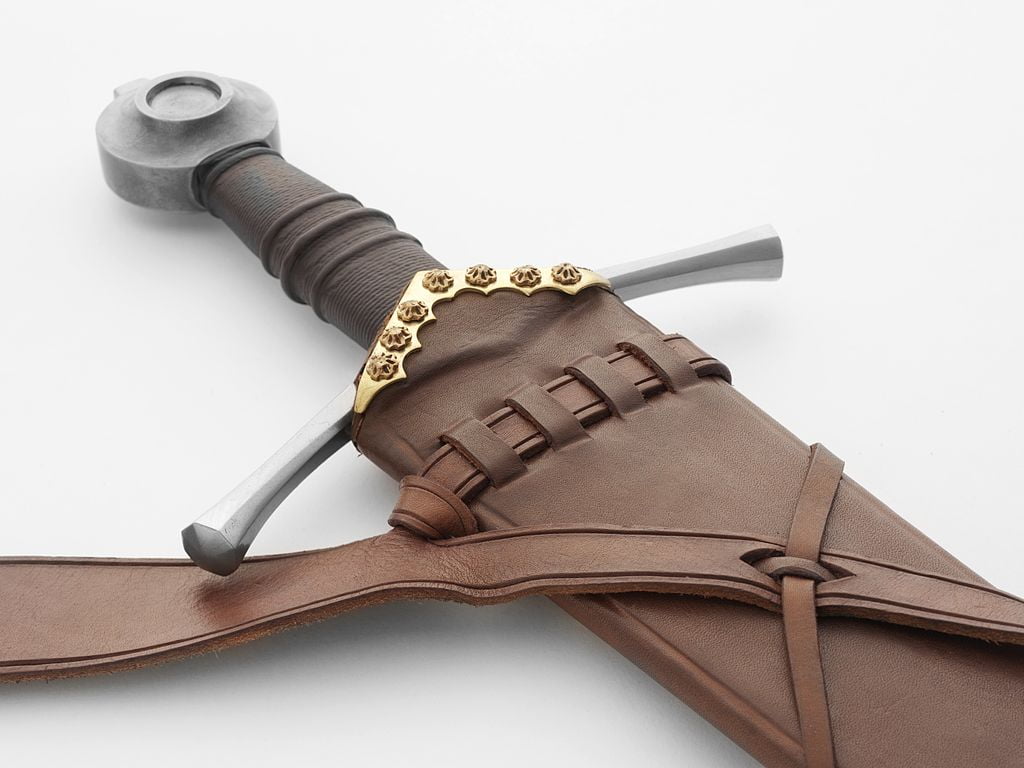Scabbards

The Quintessential paladin
Author Alejandro Melchor
Series Quintessential Series
Publisher Mongoose Publishing
Publish date 2002
Taking care of his blade is of paramount importance to a warrior, and that includes sheathing it in a proper scabbard. Scabbards can be works of art themselves, made with precious goods and lined by gold and silver, with studded jewels along its length, with the softest of velvets in the interior. paladins, who cannot afford to generalize their combat training like a fighter would, tend to specialize with swords, and therefore see scabbards as an important tool rather than just a place to keep a sword near their sword arm. The following are some of the scabbard types that paladins use, which are open for use by any other sword-wielding character.
- Container: The length of the scabbard is fitted with one to three small pockets, mostly used to keep the tools to maintain the blade, but that also hold other things. Each pocket is large enough to contain two vials.
- Dagger: Often seen as cowardly or underhand by a paladin, more worldly members of the class know that it could save their lives. The scabbard is one hand-span longer than the blade it is supposed to sheathe as it hides a small, spring-loaded dagger that slips through the scabbard’s point to become a slightly unwieldy weapon that deals 1d4 damage.
- Secret Container: This scabbard has a hidden compartment that can fit one vial, built on the side of the scabbard that rests against its owner’s body, or at its tip. It is useful for keeping holy relics and tokens, but it can also smuggle small doses of special substances, such as Holy Water.
- Fancy: These scabbards are treasures, sometimes worth even more than the sword they were made to store. Fancy scabbards are adorned with the finest, richest materials and are ripe for enchantment.

 Buy me a coffee
Buy me a coffee